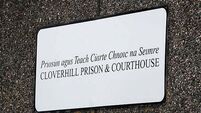Why we keep playing it again, Sam
The film that possibly gave popular culture the most quotes since Shakespeare is 70 years old this year. Casablanca, that classic old black and white movie starring Humphrey Bogart and Ingrid Bergman premiered at the Hollywood Theatre in New York on Nov 26, 1942. On March 27, Casablanca will be rereleased on an anniversary DVD, and is being shown in 450 cinemas across America
Although it was not considered anything special at the time of filming, Casablanca swiftly captured the public imagination — and three Oscars, for best film, best director, and best screenplay. Today, it is considered one of the greatest romantic films ever; US film historian and critic Leonard Maltin went one further, describing it as “the best Hollywood movie of all time”.
Humphrey Bogart’s iconic performance as cynical café owner Rick spawned phrases still in use today. “Of all the gin joints in all the towns in all the world she walks into my place,” he drawled. Another character gave instructions to, “Round up the usual suspects”, and there was the famous suggestion that, “This could be the start of a beautiful friendship”.
Casablanca is also the source of one of the most misquoted catchphrases of all time — “Play it again Sam” was actually scripted as, “Play it once Sam, for old time’s sake”. There have even been newer movies whose titles come from Casablanca’s catchphrases; Woody Allen’s Play It Again Sam, and the Kevin Spacey thriller The Usual Suspects.
We love our classic old movies. Their reliance on a good script, passionate acting (or over-acting), stylish players, emotive music and little else places films like Casablanca a long way from the exhausting 3-D blockbusters and cretinous Adam Sandler-type franchises that contribute to a sizeable chunk of mainstream cinema today. Contemporary cinema, while undoubtedly exhilarating, can be a deafening sensory overload, high on effects and low on everything else.
Seventy years ago, films did not rely on visual and aural overload, and so had to shine in other areas. They do not seem naturalistic to a 21st century eye and ear. Everyone spoke in a strange, clipped, anxious manner, and all the men wore hats. The women looked like Dita Von Teese in black and white, everyone smoked constantly, and the world portrayed was like time travelling backwards to an era of ultra-defined gender roles, passionate romantic love, no sex, and no black people who weren’t servants. Gay people didn’t exist either, in this long-ago black-and-white land.
The power of the old movies, despite their cultural black-and-whiteness, is that they told stories. In the absence of Spider-Man abseiling New York sky scrapers, or Alien chasing Sigourney Weaver around the Nostromo, the greatest old movies were entirely narrative driven; they would have worked just as well as plays (indeed Casablanca started life as a stage play). You could hardly say that about Avatar or Pirates of the Caribbean.
There is something deeply soothing about curling up in comfort to watch an old classic; they require little effort, yet remain gripping enough to hold your attention without either traumatising you or sending you to sleep. Even if the script is dull, just watching how the actors look, speak and move is in itself fascinating, acting as a portal to the past.
Horror movies were not an established genre back in the days of black and white film, so when classic old movies used disturbing story lines, they did it really well: Psycho and Whatever Happened To Baby Jane are two of the creepiest movies ever. Instead of Trainspotting or Leaving Las Vegas, there was The Lost Weekend. It’s hard to think of a contemporary equivalent with the same artistic and cultural impact as Citizen Kane, and few modern movies can convey hopeless longing like Brief Encounter. Even relatively modern black and whites, like 1962’s To Kill A Mocking Bird, set the standard for court room drama.
Such is our love of and fascination for old movies that we can’t quite let them go. Next year sees the release of a new movie about an old movie. Alfred Hitchcock and the Making of Psycho, based on a 1990 book by Stephen Rebello, stars Anthony Hopkins as Hitchcock, Scarlett Johansson as Janet Leigh, Helen Mirren as Hitchcock’s wife Alma Reville, and James D’Arcy as Anthony Perkins.
In terms of legacy, Norman Bates and Bates Motel are still bywords for scary insanity, 50 years on.
Our lasting infatuation with Hitchcock transcends the fact that he was most likely a total nightmare to work with. The star of that other great creepy Hitchcock movie The Birds, Tippi Hedren, was interviewed recently on BBC Radio 4’s Woman’s Hour.
She described not only the horror of the use of live birds in the making of the close-up attack scenes (and not mechanical ones, as she had been promised), but also the horror of being on the receiving end of Hitchcock’s extreme obsession with her.
An undoubted misogynist, the director made sure his cool blonde leading ladies suffered horribly — both in front of the camera, and as a result of his relentless sexual fascination with them. But we remain enthralled because he made such great movies.
Our ongoing love affair with the past has never been more apparent than with the success of The Artist. Who, in 2012, would have ever thought that a silent black and white film could capture our imaginations so completely?
Film academic Neal Gabler, writing in the LA Times, suggests that The Artist is all about what he terms ‘anti-blockbusterism’ — that we are sick to death of booming, blinding big movies, and were charmed by the sheer beauty, simplicity and sweetness of the unexpected Oscar winner.
“The Artist is, among other things, a movie about innovation and limitation — essentially about the limitations of innovation,” wrote Gabler. “If one takes sound to be a metaphor for every technological change in the movies, The Artist speaks to our obsession with the new and our casual dismissal of the old, though it also addresses how technology transforms the very cosmology in which we live.”
Aside from The Artist, a handful of modern films have been made in black and white to good effect. The Elephant Man and Schindler’s List both work better without colour, as does Kevin Smith’s debut, Clerks.
Suggestions by some people to add colour to old black and white movies are generally rejected; we may have the technology to do this, but it would be a bit like putting clothes on a statue. They’re great the way they are.












